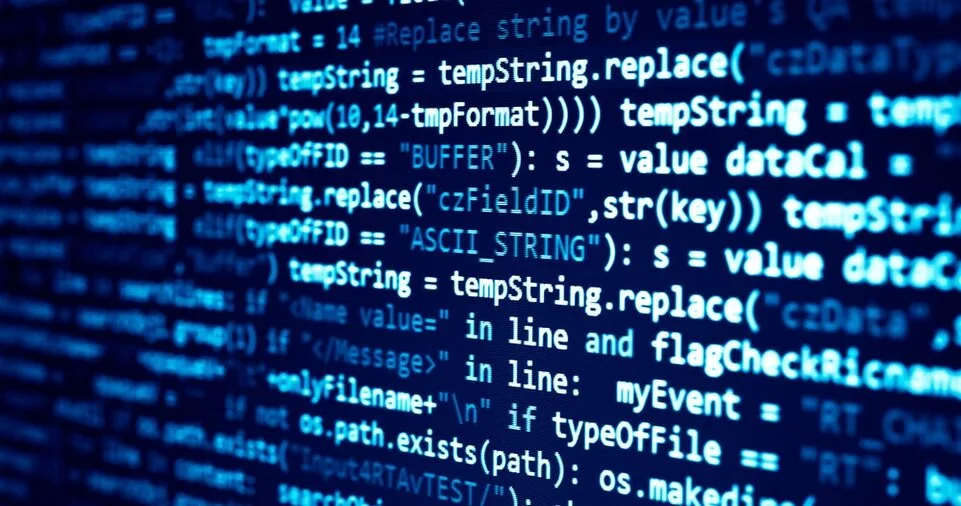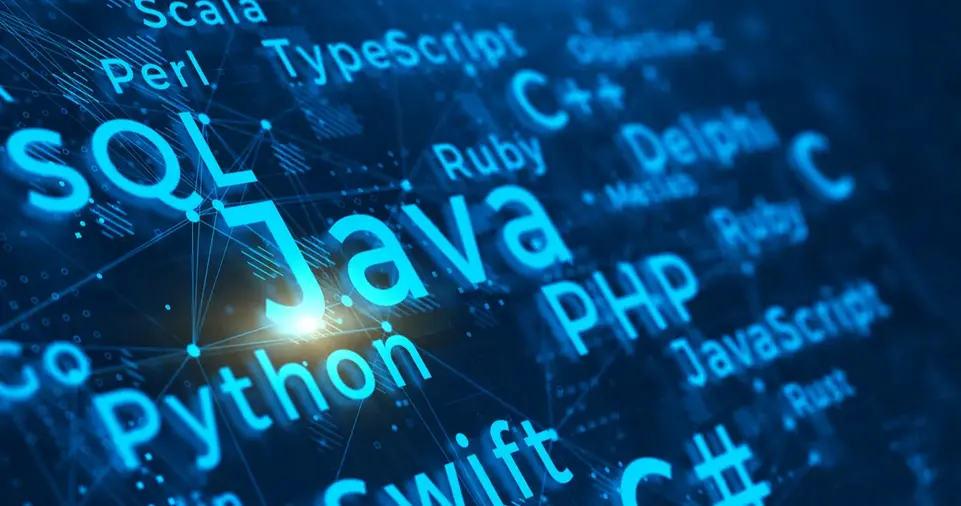Choosing the right programming language is one of the most crucial decisions you’ll make when starting a software development project.
The programming language you select will have a significant impact on the project’s functionality, performance, scalability, and long-term maintainability.
Whether you’re building a simple website or a complex mobile app, each language has its strengths and weaknesses that align differently with specific project requirements.
This decision isn’t just about your personal preference or the “popularity” of a language; it’s about carefully evaluating factors like your project’s goals, performance needs, scalability, ease of learning, and available tools.
It’s also about considering the development timeline, budget, and long-term sustainability of the project.
In this article, we will guide you through the decision-making process by examining various factors that influence the choice of a programming language.
By understanding these factors, you can make an informed choice that best fits your project’s needs, whether you’re developing a web application, mobile app, game, or data-driven system.
How to Choose the Best Programming Language

Understanding Your Project Type and Requirements
When choosing a programming language, the first factor to consider is the type of project you’re working on.
Different programming languages are optimized for specific tasks, and selecting the right one for the job will greatly enhance your development experience.
Let’s look at different types of projects and the languages best suited for them.
Web Development
For web development, the primary languages are HTML, CSS, and JavaScript. These form the foundation of every website.
HTML is used for structuring content, CSS for styling, and JavaScript for interactivity.
However, when it comes to backend development (i.e., the server-side logic), you have a wider selection of languages:
JavaScript (Node.js):
For full-stack development, JavaScript is a common choice. With frameworks like Node.js, JavaScript can be used on both the frontend and backend, allowing for a streamlined development process.
Python:
Known for its readability and clean syntax, Python has powerful frameworks like Django and Flask, making it an excellent choice for backend web development.
Ruby:
With the Ruby on Rails framework, Ruby is another popular choice for building dynamic web applications. It’s highly efficient and easy to learn, which is why many startups choose it.
PHP:
Although less trendy today, PHP is still widely used for web development, especially in content management systems (like WordPress).
Each of these languages has its own strengths, and the decision will depend on your project’s specific needs.
For example, if you want rapid development and scalability, Node.js could be ideal.
On the other hand, Python is an excellent choice if you need simplicity and a large library ecosystem.
Mobile App Development
When it comes to mobile development, the language you choose depends on whether you’re developing for iOS, Android, or both.
- Swift is the go-to language for iOS development. It is fast, modern, and offers a great developer experience.
- Kotlin and Java are the most popular languages for Android app development. Kotlin is often preferred for its modern syntax and conciseness, but Java is still widely used in existing Android codebases.
- Flutter (Dart) and React Native (JavaScript) are cross-platform frameworks that allow you to write a single codebase for both iOS and Android. This is great for projects with limited resources or tight deadlines.
Game Development
For game development, the choice of language is also dependent on the platform you’re targeting.
- C++ is the traditional choice for high-performance games, particularly on consoles and PC, as it provides direct control over system resources.
- C# is widely used in Unity, one of the most popular game engines, and is great for developing both 2D and 3D games.
- JavaScript can also be used for web-based games, especially with HTML5 and the canvas API.
Data Science and Artificial Intelligence
When working with data science or AI applications, the primary language is Python.
Python is incredibly popular in the data science community, thanks to libraries like Pandas, NumPy, and TensorFlow.
Its syntax is simple, making it easier for data scientists to write clear and effective code.
However, R is another language specifically designed for statistical computing and is often used in academia and research settings.
While Python remains the top choice for AI, both Python and R have their advantages, depending on your project’s complexity.
Evaluating Performance Needs
Another critical factor to consider when choosing a programming language is performance.
If your project requires handling large volumes of data or complex computations, you’ll need a language that can provide high performance and scalability.
Low-Level vs. High-Level Languages
Low-level languages like C and C++ are closer to machine code and offer greater control over system resources.
These languages are extremely fast and efficient, making them ideal for applications where performance is crucial.
Such as:
- Game engines
- Operating systems
- Embedded systems
- Real-time applications
However, they come with a steeper learning curve due to their complexity and the need for manual memory management.
On the other hand, high-level languages like Python, JavaScript, and Ruby prioritize ease of use over performance.
While these languages are generally slower than low-level languages, they are sufficient for most applications, and modern optimizations and frameworks can mitigate performance issues in many cases.
Speed vs. Developer Productivity
Consider whether speed or developer productivity is more important.
High-level languages often allow developers to write code faster, but they can sacrifice some execution speed.
If your application needs to handle thousands of requests per second (like a high-performance web server), a language like Go or Rust might be more appropriate, as these offer a good balance between performance and developer productivity.
Assessing Learning Curve and Developer Experience
The learning curve of a programming language is another important factor to consider.
If your team is already familiar with a particular language, it may be more efficient to use that language instead of choosing one that requires additional training.
Easy-to-Learn Languages
Some languages are easier to learn than others. Python is often recommended for beginners because of its clean syntax and high-level abstractions.
It’s a great choice for rapid prototyping and learning, and it’s widely used in various domains, from web development to machine learning.
JavaScript is another beginner-friendly language, especially for web development. It’s widely used across the frontend and backend (via Node.js), making it a great choice for full-stack developers.
Challenging Languages
On the other hand, languages like C++ or Rust offer greater control over system resources but have a steeper learning curve.
They require more attention to detail, particularly when it comes to memory management and performance optimization.
If you’re on a tight timeline or lack experienced developers in these areas, choosing a language with a less challenging learning curve could save a lot of time.
Considering Community Support and Ecosystem
A strong community can be a significant advantage when choosing a programming language.
A large community provides access to a wealth of resources, tutorials, and third-party libraries, which can significantly speed up development.
Popular Languages with Strong Communities
JavaScript, Python, Java, and PHP have massive, active communities.
There are thousands of libraries, frameworks, and tools available, along with a large number of forums, tutorials, and open-source projects to help developers solve problems.
A strong ecosystem of libraries can reduce development time by allowing you to leverage pre-built solutions rather than building everything from scratch.
Emerging Languages
Emerging languages like Rust and Go are gaining popularity due to their high performance and modern features.
While these languages might have smaller communities compared to JavaScript or Python, their ecosystems are growing, and they are backed by large tech companies (e.g., Rust is used at Mozilla, and Go at Google).
Scalability and Long-Term Maintenance
When selecting a programming language, you should also consider how well it scales as your application grows and whether it will be easy to maintain in the long run.
Scalability refers to the ability of your application to handle increasing load, whether in terms of users, data volume, or functionality.
Scalability Considerations
Go is known for its scalability and concurrency model, which makes it an excellent choice for building distributed systems and large-scale web services.
Java is another highly scalable language, widely used for enterprise-level applications.
Its strong type system, garbage collection, and mature frameworks like Spring help manage large codebases and traffic demands.
Long-Term Maintenance
Maintaining a project long-term requires choosing a language that supports clear, readable, and modular code.
Languages like Python, Java, and C# are known for being easy to maintain because they support strong object-oriented principles and come with extensive tooling for refactoring and code analysis.
Budget and Resources
The budget and resources available for your project will also influence your choice of programming language.
Some languages, such as Python and Ruby, have a large pool of developers and extensive documentation, making them cost-effective choices.
In contrast, languages like C++ or Java may require specialized developers, which could increase hiring costs.
Additionally, consider the availability of frameworks and tools that can help speed up development.
A language with a rich set of libraries and frameworks can reduce the time needed for custom development.
ALSO READ: How to Build a Mobile App from Scratch
Conclusion
Choosing the right programming language is crucial for the success of your project.
By considering factors such as project type, performance needs, scalability, learning curve, and available resources, you can make an informed decision that aligns with your project’s goals.
While there is no one-size-fits-all answer, understanding these factors will help you select a language that enhances productivity, meets performance requirements, and ensures long-term maintainability.
Remember, the best language for your project depends on the unique needs of your application.
Take the time to research and experiment with different languages to find the one that’s the best fit.

